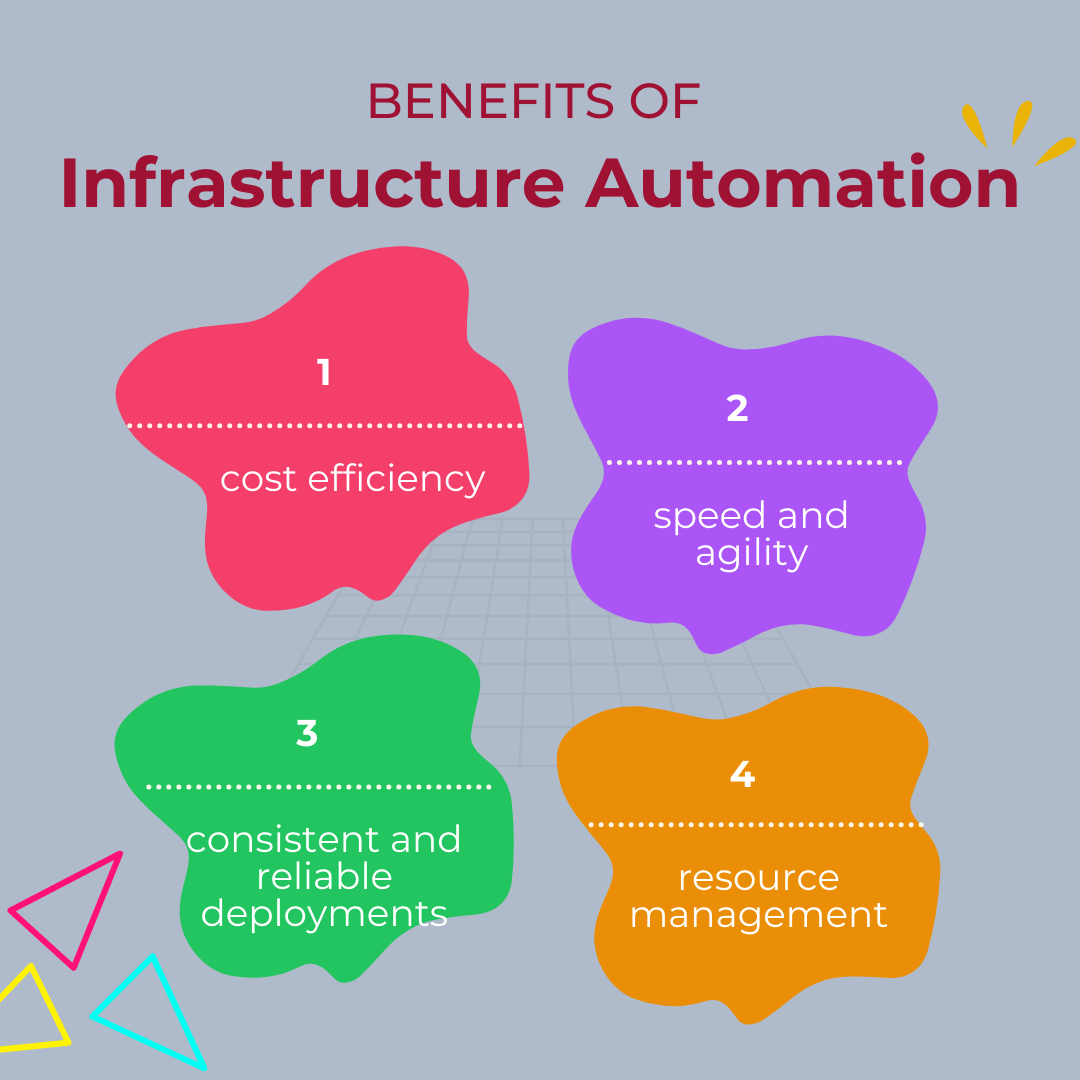Introduction
Managing IT infrastructure manually can be slow and error-prone, leading to inefficiencies and costly mistakes. As businesses grow, the complexity of infrastructure management can become overwhelming, causing delays and hampering innovation.
Infrastructure automation offers a solution by streamlining processes, reducing human error, and accelerating deployment times. This transformation enables businesses to operate more efficiently, reduce costs, and respond quickly to market demands, making automation an essential component of modern IT strategy.
Overview of Infrastructure Automation
Infrastructure automation involves leveraging technology to streamline the management and provisioning of computing resources, minimizing the reliance on manual efforts. It is crucial in modern IT environments, where complexity and scale demand efficiency and speed.
Infrastructure automation encompasses key concepts like Infrastructure as Code (IaC), which allows infrastructure to be managed using code, and Continuous Integration/Continuous Deployment (CI/CD), which streamlines the development and deployment processes.
By automating tasks such as configuration, scaling, and monitoring, businesses can achieve greater consistency, reliability, and agility. This automation is foundational for DevOps practices, enabling seamless collaboration between development and operations teams.
Additionally, it ensures uniformity across environments, minimizing human errors and allowing for rapid adaptation to changing market conditions. Ultimately, infrastructure automation not only enhances operational efficiency but also drives innovation by freeing up IT resources to focus on strategic initiatives.
Benefits of Infrastructure Automation
Infrastructure automation offers a range of benefits that can transform how businesses manage their IT environments.
First, it delivers cost efficiency by reducing the need for large IT teams and lowering maintenance expenses, with real-life examples highlighting significant savings.
Second, automation enhances speed and agility, enabling faster deployment and quick responses to market changes. It also promotes DevOps adoption, serving as the backbone for seamless integration of DevOps practices.
Additionally, consistent and reliable deployments are ensured by minimizing human error and maintaining uniformity across environments.
Lastly, resource management is optimized as automation handles routine tasks, allowing better allocation of resources, especially in cloud and hybrid environments. These benefits collectively make infrastructure automation essential for modern businesses looking to stay competitive and efficient.

Advanced Use Cases
Infrastructure automation is not just a theoretical concept; it's actively transforming businesses across industries.
Real-Life Example 1: Netflix
Netflix, a global streaming leader, implemented infrastructure automation using Infrastructure as Code (IaC) and Continuous Integration/Continuous Deployment (CI/CD) to manage its complex, high-traffic environment.
Automation, including tools like "Chaos Monkey", allowed Netflix to dynamically scale resources, reduce downtime, and quickly deploy new features. This approach resulted in near-zero downtime, consistent performance, and an improved user experience for millions of viewers worldwide.
Real-Life Example 2: Capital One
Capital One, a major financial institution, adopted infrastructure automation with AWS CloudFormation and CI/CD pipelines to handle its complex and secure infrastructure.
Automation streamlined deployments, reduced errors, and allowed rapid scaling in response to demand. It also enhanced security and compliance, cut management costs, and sped up the implementation of new features, ensuring reliable and efficient service delivery.
Common Challenges and How to Overcome Them
While infrastructure automation offers numerous benefits, it also presents challenges that can hinder its implementation. One major challenge is the initial setup complexity, where businesses may struggle with configuring automation tools and systems.
To overcome this, starting with small, manageable projects and gradually scaling up can simplify the process. Another issue is the skill gaps in teams, as not all IT professionals are experienced in automation. Investing in training programs and using user-friendly tools can bridge this gap.
Additionally, security concerns are prevalent, as automation can introduce vulnerabilities if not properly managed. Implementing best practices, such as regular audits and secure coding, can help mitigate these risks. Addressing these challenges is key to successfully harnessing the power of infrastructure automation.
Future of Infrastructure Automation
The future of infrastructure automation is poised to be even more transformative with the integration of emerging technologies like AI and Machine Learning. These advancements will enable predictive automation, where systems anticipate needs and adjust resources accordingly.
Additionally, automation will continue to evolve, playing a larger role in IT, with trends pointing toward more sophisticated and self-healing infrastructures. As businesses increasingly rely on automation to drive efficiency and innovation, the role of IT professionals will shift from manual tasks to strategic oversight, ensuring that organizations remain competitive in a rapidly changing landscape.
Key Takeaways
- Cost Savings: Automation reduces IT costs and improves efficiency.
- Speed & Agility: Faster deployments and quicker adaptation to market changes.
- Consistent Deployments: Minimizes human error, ensuring reliable and uniform environments.
- Enhanced DevOps: Facilitates seamless integration of DevOps practices.
- Future Trends: AI and Machine Learning will drive predictive automation and more sophisticated infrastructures.
Conclusion
Infrastructure automation is a game-changer for businesses, offering significant benefits like cost savings, increased speed, and improved consistency in deployments.
By adopting automation, companies can streamline operations, enhance DevOps integration, and better manage resources, positioning themselves for long-term success. However, it’s crucial to address challenges like setup complexity, skill gaps, and security concerns to fully realize these benefits.
As technology evolves, automation will become even more integral, driving innovation and efficiency across IT landscapes. Embracing infrastructure automation is essential for staying competitive in today’s fast-paced digital world.

